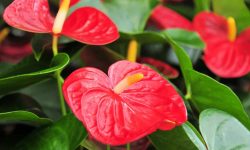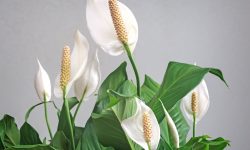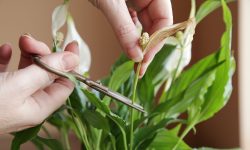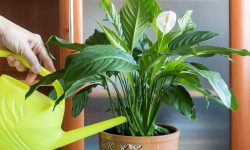Zinnias are among the most beloved flowers in summer gardens for their bright colors, low-maintenance nature, and consistent blooming. Whether you’re growing them in garden beds, borders, or containers, zinnias reward you with a continuous burst of vibrant flowers that attract butterflies, bees, and admiration. However, if you want these blooms to last from early summer through fall, there is one crucial gardening practice you can’t overlook—deadheading.
Deadheading zinnias isn’t just about keeping your garden tidy. It’s a strategic move that signals the plant to focus on producing new buds instead of maturing seeds. When done correctly and consistently, deadheading can transform a basic flower patch into a non-stop floral show that thrives in the heat and rewards you with color week after week. Understanding the right time, technique, and rhythm for this process is key to unlocking the full blooming potential of zinnias.
This detailed guide explores everything you need to know about deadheading zinnias, including the science behind the practice, how it encourages blooming, and how to approach it with care. Whether you’re a beginner or a seasoned gardener, mastering the art of deadheading will dramatically improve your results with zinnias throughout the summer season.
Why Deadheading Is Essential for Zinnias
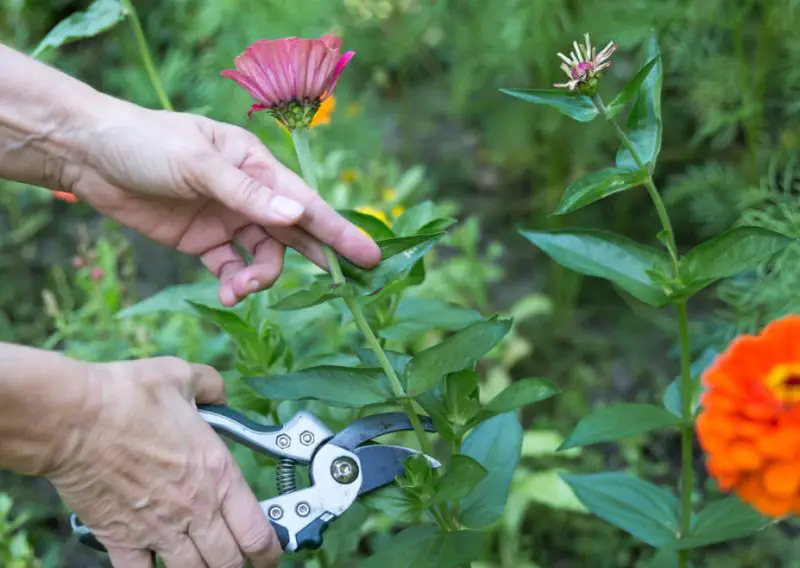
Zinnias are annual flowers, meaning they complete their life cycle within one growing season. Their natural goal is to bloom, get pollinated, produce seeds, and then die. Once a flower starts to fade and set seed, the plant begins to shift its energy away from flowering and into reproduction. This biological focus can cause the zinnia to slow down or even stop producing new flowers altogether.
Deadheading disrupts this cycle by removing faded blooms before seed production begins. Without the ability to complete seed development, the plant responds by pushing out new growth in an effort to reproduce again. This reaction keeps the plant in a perpetual state of flower production, especially during the warm months when zinnias thrive the most.
In addition to stimulating more blooms, deadheading improves the appearance of the plant. Faded or dried-up flowers can make even the healthiest zinnia patch look neglected. By removing these spent blooms, you maintain a cleaner, more vibrant garden space that shows off each flower to its fullest potential. This cosmetic benefit is especially valuable for front-yard gardens, pollinator beds, and floral displays.
Timing Deadheading for Maximum Bloom Cycles
Knowing when to deadhead zinnias is just as important as how to do it. Timing this task correctly ensures the plant is encouraged to rebloom rather than stressed. The best time to begin deadheading is when the first wave of flowers starts to fade. Depending on your local climate and planting time, this can happen as early as late spring or early summer.
Zinnia flowers typically last for several days to over a week in good conditions. You’ll know it’s time to deadhead when the petals start to curl, brown, or drop. If the central disk of the flower begins to dry or looks swollen with seeds, the plant has already begun the process of going to seed, and it’s best to act quickly to redirect its energy.
Deadheading should continue throughout the blooming season. Zinnias are known for their prolific nature, so new flowers can appear every few days once the plant is established. A regular deadheading routine—ideally once or twice a week—will keep the plant blooming vigorously. However, this frequency can vary depending on your growing zone, weather conditions, and the size of your garden.
Finding the Right Spot to Cut on the Stem
To deadhead zinnias effectively, it’s important to understand where and how to make the cut. You should remove the entire flower head along with the stem just above the next set of healthy leaves or lateral bud. This method encourages the plant to branch out from that node, producing new stems that will bear more flowers in the coming days.
Cutting too close to the flower head without removing enough stem can result in unattractive stubs that don’t produce strong new growth. On the other hand, cutting too far down can remove unnecessary foliage and reduce the plant’s ability to photosynthesize effectively. The ideal cut is made just above a leaf pair where you can see a small bud forming in the leaf axil.
Using clean, sharp garden shears or scissors helps make precise cuts without damaging the stem. This is important because ragged or torn stems are more vulnerable to pests and disease. For younger plants or soft stems, you may be able to pinch the flower head off with your fingers, but for thicker stems, shears offer better control and cleaner results.
Tools and Supplies to Support the Process
While deadheading is a straightforward task, having the right tools on hand can make the process smoother and more efficient. A pair of sharp bypass pruning shears is ideal for most zinnia stems, especially for larger or more mature plants. These shears allow for clean cuts without crushing plant tissue, which helps the plant heal faster and minimizes the risk of infection.
Garden gloves are another valuable tool, particularly for protecting your hands from rough stems, sticky sap, or insects. Zinnias aren’t thorny, but their stems can be stiff or slightly bristly depending on the variety. Gloves can also help prevent skin irritation for sensitive gardeners.
A small bucket or container for collecting spent blooms can make the job less messy and keep your garden tidy as you work. These removed flower heads can be composted unless they show signs of disease. Keeping your work area clean helps reduce the spread of fungal spores and pests throughout your garden.
Understanding Zinnia Growth Patterns
Zinnias grow in a branching pattern, and every time a stem is cut back, it responds by producing two new shoots. This characteristic is what makes them ideal candidates for deadheading. By cutting just above a node with healthy leaves, you activate dormant growth points that generate new stems, each capable of developing flower buds.
The more often you deadhead, the bushier and more floriferous your plant becomes. This pattern is especially evident in taller varieties like Zinnia elegans, which respond dramatically to pruning. Dwarf and compact zinnias also benefit, although their growth may be less vigorous in scale. Regardless of the type, deadheading boosts not only flower quantity but also plant structure, resulting in fuller, more attractive growth.
This branching behavior makes zinnias incredibly forgiving and versatile. If you accidentally cut a stem too short, the plant will typically still recover by sending out new growth from lower down. Understanding this resiliency encourages gardeners to approach deadheading with confidence and consistency throughout the summer.
Supporting Bloom Production with Proper Care
Deadheading alone won’t keep your zinnias blooming nonstop unless it’s paired with other good gardening practices. Zinnias are sun-loving plants that require at least six to eight hours of direct sunlight per day. Ensuring they receive ample light helps fuel the energy needed to keep up with continuous flower production.
Regular watering is also essential, particularly during hot, dry spells. Zinnias prefer soil that is consistently moist but not soggy. Overwatering can lead to root rot and mildew, while underwatering can stress the plant and halt flower production. Watering early in the day and at the base of the plant helps reduce the risk of foliar diseases.
Fertilizing your zinnias periodically will further support reblooming. A balanced flower fertilizer or compost-rich soil can provide the nutrients necessary for sustained flowering. Avoid excessive nitrogen, as this can lead to lush foliage at the expense of blooms. Combining deadheading with these essential care steps forms a reliable strategy for encouraging nonstop zinnia blooms all season long.
Dealing with Challenges During the Blooming Cycle
Even with regular deadheading and proper care, zinnias can encounter a few common challenges during their long blooming period. One of the most frequent issues is powdery mildew, a fungal disease that thrives in humid conditions. It appears as a white, powdery coating on leaves and can interfere with photosynthesis, ultimately affecting flower production.
To prevent mildew, ensure good air circulation around your plants by spacing them appropriately and avoiding overhead watering. If mildew does appear, removing affected leaves and applying organic fungicides can help limit its spread. Healthy plants maintained through deadheading and pruning tend to be more resistant to disease.
Another challenge is pest pressure, especially from aphids, spider mites, and Japanese beetles. These pests can damage flowers and suck the sap from tender stems, weakening the plant. Monitoring your plants regularly allows you to catch infestations early and treat them with insecticidal soap or natural predators like ladybugs.
Environmental stress such as heat waves, wind, or poor soil can also impact flowering. In these cases, supporting your zinnias with mulch, shade cloth, or soil amendments can improve resilience and allow the plants to recover quickly after being deadheaded. Proactive care makes a big difference when maintaining nonstop blooms.
Allowing Some Flowers to Set Seed
While the main goal of deadheading is to prolong blooming, some gardeners choose to allow a few flowers to go to seed, especially toward the end of the season. This can be a strategic decision if you want to collect seeds for next year’s planting. Zinnia seeds are easy to harvest from dried flower heads, making them a rewarding choice for seed savers.
To do this, select healthy flowers and stop deadheading them once they begin to fade. Let them dry on the plant until the seed heads become brown and papery. Harvesting at the right time ensures mature, viable seeds that can be stored and sown in the following season. Balancing deadheading with seed saving is a great way to enjoy continuous blooms while also planning ahead.
Just be cautious not to let too many flowers go to seed too early, as this can reduce the plant’s motivation to continue blooming. Waiting until late summer or early fall to stop deadheading specific flowers is typically the best strategy for maintaining flower production while still obtaining seeds.
Knowing When to Stop Deadheading for the Year
As the growing season begins to wind down, there comes a point when deadheading is no longer necessary. In many regions, this occurs in early to mid-autumn, depending on the arrival of cooler temperatures and shorter daylight hours. At this stage, your zinnias will naturally begin to slow down, and it’s appropriate to let the final blooms fade and set seed.
Allowing the last wave of flowers to mature and go to seed helps complete the plant’s life cycle. It also provides an opportunity to support wildlife, as birds may feed on the seeds during fall and early winter. This final transition marks the close of the blooming season and offers a moment of appreciation for the color and joy zinnias brought throughout the summer.
Stopping deadheading at the right time also prepares your garden for cleanup and composting before winter. Removing tired plants and spent stems makes way for soil conditioning and early planning for next year’s flower beds. Recognizing the natural rhythm of your garden ensures sustainable practices that align with plant health and seasonal changes.
FAQs About How to Deadhead Zinnias
Does deadheading really make zinnias bloom more?
Yes, removing faded blooms prevents seed formation and stimulates the plant to produce more flowers instead of focusing on reproduction.
Can I deadhead zinnias with my fingers?
For soft-stemmed or young plants, pinching with fingers is fine, but for mature zinnias, clean cuts with shears give better results and reduce stem damage.
How often should I deadhead zinnias?
Deadheading once or twice a week during peak bloom season is ideal, depending on how quickly your flowers fade and how many you have.
Will zinnias keep blooming if I forget to deadhead?
They may bloom for a while, but flower production will slow significantly once the plant starts setting seed. Consistent deadheading ensures prolonged blooming.
Can I save seeds from zinnias even if I deadhead?
Yes, just leave a few healthy flower heads to dry on the plant near the end of the season, and you can collect seeds from them for next year.


